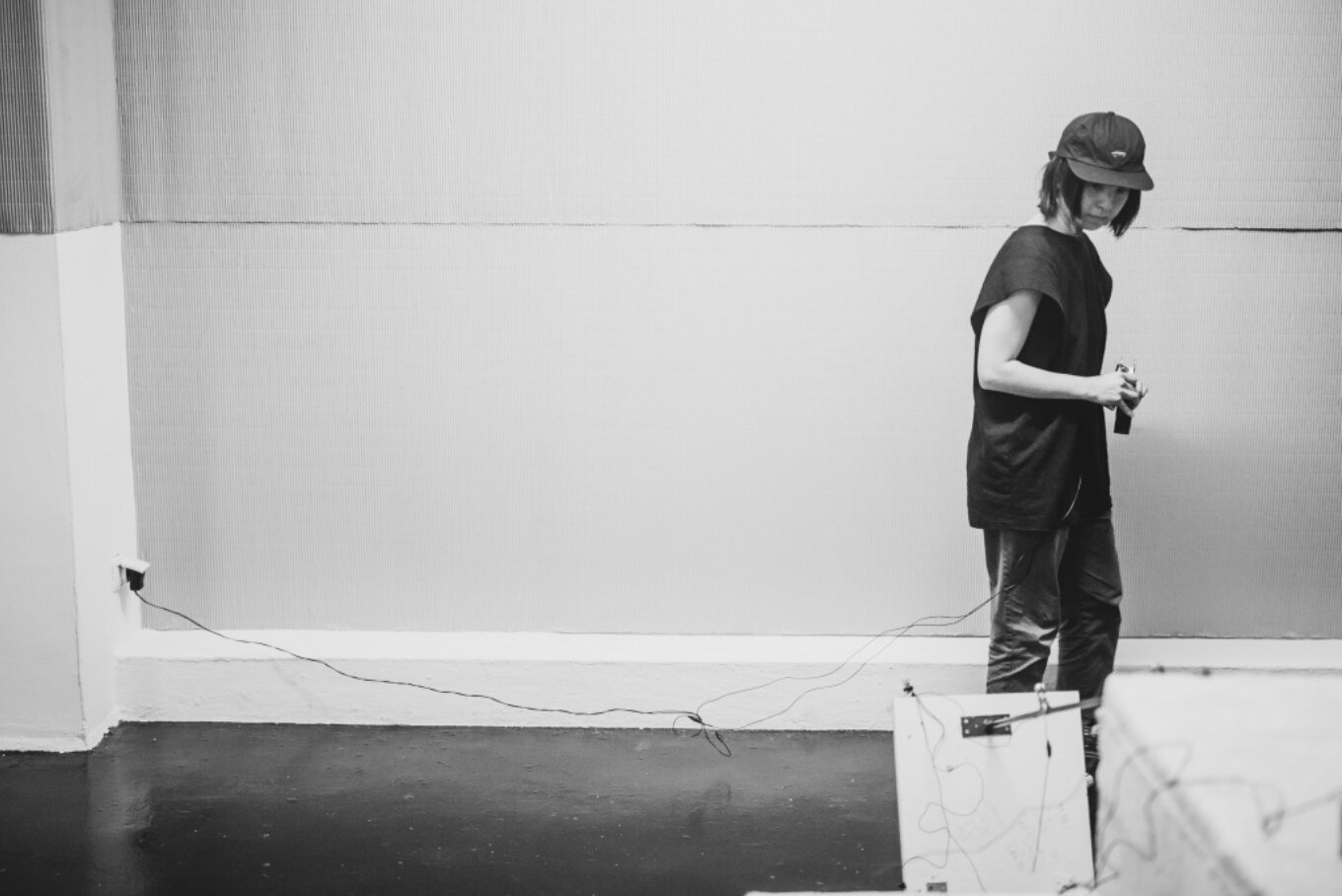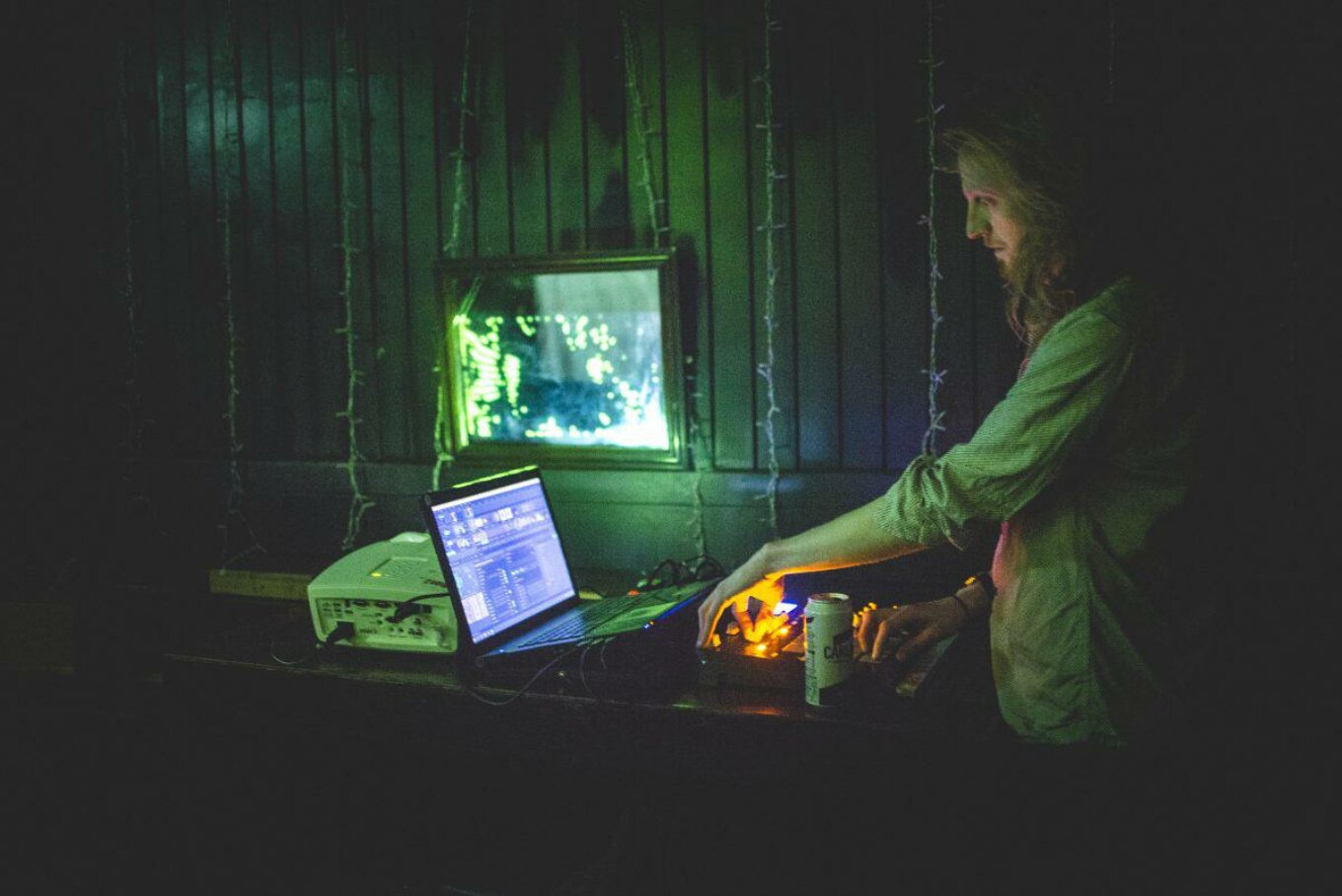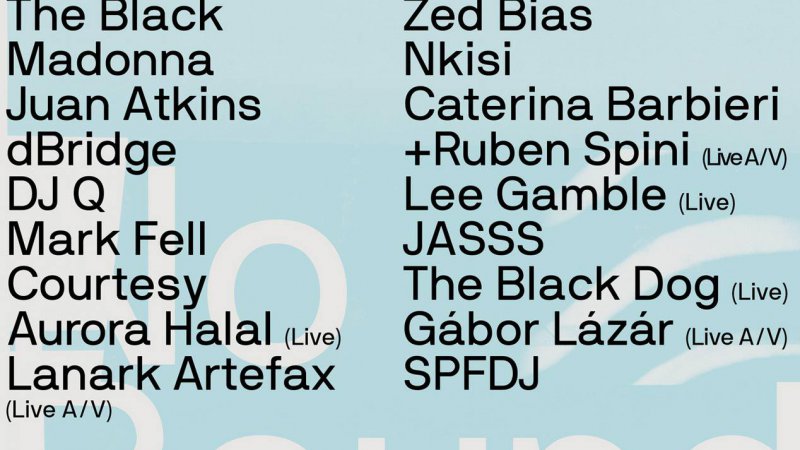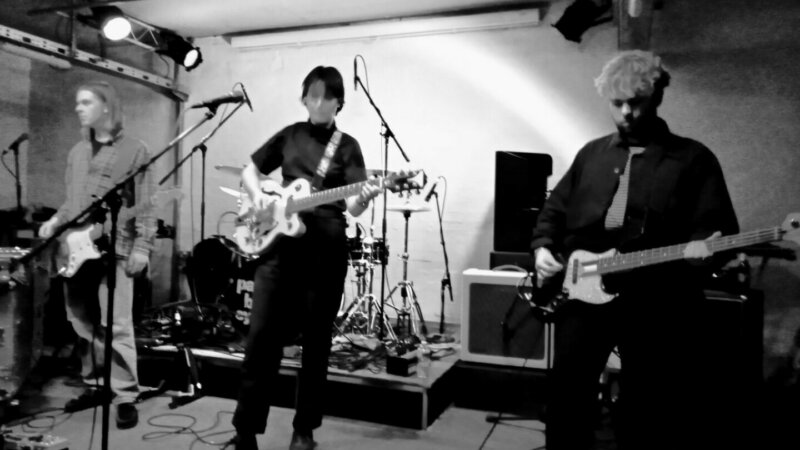No Bounds Festival 2019: Ryoko Akama & Nakul Krishnamurthy / The Black Dog / +6 Gain / Zaron Mizmeras

By Marek Nowicki
Ryoko Akama & Nakul Krishnamurthy
The Tactical Contact strand ran on the Saturday of No Bounds Festival, deep in the bowels of Kelham Island Museum. For those not zombified from Friday night's rave, Mark Fell and Pedro Rocha curated an extensive daytime programme which saw two sound artists, Ryoko Akama and Nakul Krishnamurthy, collaborate for a 45-minute ambient performance.
The museum's Little Mesters Street provided a bizarre backdrop as a small crowd shuffled in. It's a narrow, brick-walled room with high ceilings, reconstructing a Victorian Sheffield full of workshops belonging to self-employed makers. You couldn't get comfy standing on the patchy cobbled floor and with sitting down out of the question, some people took to perching on grindstones. That's what you call a peak Sheffield experience for newcomers to the city.
Optimism isn't really in fashion
The sensation of physical discomfort played well into the performance itself. An easy 15 minutes of pipe organ sounding synths built up a nice menace to begin with. This panned out as a never-ending nightmare of disturbing, morphing synths contrasted only by the comfortable repetition of a big, benevolent bass groan every so often. This was hardly a saving grace though, because shortly after that a noise as chilly as a ballroom sax motif from a Caretaker album haunted the room. Looking back, this wasn't an enjoyable experience, but maybe that's what the musicians wanted.
"Optimism isn't really in fashion," says Joe Muggs in his intro to the festival, because "the world is burning and melting around us". What makes life bearable, he reckons, is "small-scale, human level stuff [...] people building and shoring up culture". It's little pockets of exciting activity, like this performance, that Mugg's considers "real". "What No Bounds represents is real."
The Black Dog
UK weekenders and swimming pools. Health and safety-wise quite incongruent, they continue to exist side by side without disaster. Having gained a mythical status over time, egged on by the reported rowdiness from weekenders like Bangface, the pool party is often neglected in reviews and features.
No Bounds joined this well-loved tradition with a shiny new alternative, available as an add-on to the weekend with its own admission fee. For the first two years the festival linked up with the touring sound art installation Wet Sounds to put on a show down at the Victorian wash house Heeley Baths. These sessions were fully immersive, with above air and underwater speakers playing in-your-head drone. Swimmers were free to mess about, dive underwater and explore a multi-layered sub-aqua soundscape. This was a fun yet refined answer to the classic festival pool party.
This year saw No Bounds steer well clear of all that. On entry swimmers were asked to tone things down, none of the shouty-thrashy fun of the previous two years. The only problem is that it's hard to be serious on the Sunday of a festival, especially after the heavy RA-hosted rave at Hope Works the night before.
This time it felt like an awkward concert in a pool instead of a deep, immersive listening session as promised. A few PAs took the place of last year's one-of-a-kind underwater soundsystem. As a result the experience was all too arty, too serious and not as fun.
Still, if you've never been to a gig like this before then don't let my review put you off. Nowhere else can you and your mates, while listening to a live ambient set from Warp legends The Black Dog, take command of one big float in a mood-lit pool like a single-celled organism.
Jorn Plucieniczak's +6 Gain
The Holt hosted festivalgoers who managed to make it out of bed on the Sunday of No Bounds for a series of three back-to-back films, all shown at this year's Doc/Fest. The venue is a sky-lit warehouse on Arundel Street, setting the scene well for that end-of-a-weekend feeling. Bewildered looks exchanged with familiar faces filled the short intervals between each film.
Two friends throw an illegal gabber rave in Jorn Pluieniczak's short film +6 Gain. The narrative splits in two: looking for the rave and having the rave. A suburban boredom eats away at the pair, made clear by the lack of a soundtrack and dialogue. This climaxes when they start searching for a party location. As the scene begins, a shot of Google Street View takes up the entire screen. The cursor drags along the scenery for a few tedious minutes and, just like that, it's settled.
hard to make much of
The second half of the film does not resolve this boredom. A rough and ready gabber track signals the start of the party. But as disorientating handheld footage shakes around the scene's empty space, you get the feeling it's not a success. We aren't introduced to any new characters and there's not a crowd of people having fun, only a few solitary shadows, always small in the frame. At one point the two friends sit outside on the floor, looking dejected and alone.
It's hard to make much of the film. The narrative omits loads of important details, with less than half an hour to work with, and you're left baffled. Is it Pluieniczak's plot that's lacklustre or does he want you to consider something else, like the self-destructive potential of raving? Either way, it's not the easiest watch after a heavy weekend of partying.
Cyborg Activism with Zaron Mizmeras
Transhumanism is a philosophy which promotes the idea of improving the human condition with technology. This is often done with small body modifications - an implant here, a chip or two there.
Zaron Mizmeras' Cyborg Activism talk began by introducing a few present-day cyborgs. There's a guy who hacked a hearing aid to detect nearby wifi. Someone else implanted a chip that vibrates every time they face north. There's a device that constricts your neck after detecting poor air quality.
It's not all DIY though, Zaron explained, moving on to the techier stuff. Hugh Herr from MIT Media Lab, for example, has developed bionic limbs to augment human physicality. It's said, Zaron told us, that these are "a vast improvement on our current ankle systems, because we've got a lot of things to improve on in terms of ankles".
There are cyborg artists too, Zaron explained. Joe Dekni, for example, had a radar system implanted in his cheekbones. This made him feel a vibration whenever someone moved behind him. "He says it causes him intense pain," said Zaron, as the audience broke into laughter. Moon Ribas, the first female cyborg, put implants in her feet which vibrated whenever there was an earthquake anywhere on the planet. "She had them removed," Zaron explained, but was so used to the feeling that she "reported having phantom earthquakes". Zaron then asked: "If she has her cyborg implants removed is she still a cyborg artist [...] Does that affect her identity?" Thinking about this is not a good idea.
If you could improve one organ in your body, which one would it be?
Zaron discussed his own process of augmentation too. He's implanted a chip from an online business called, err, DangerousThings.com. Sold under the 'implements' section are sterile scalpels and a 'Pain Management Kit'. You'll also find a treasure chest of data-sharing implants. Priced at $179.99, the Cyborg Transformation & Lifestyle Kit comes with an "access controller to let you open your room, house or garage door with a wave of your hand". All implants come with a disclaimer stating that they aren't for use inside the human body. Their contact form asks you to tick a box saying, "I'm not a robot".
Zaron is the first to admit there's a lot of issues with transhumanism. Tampering with genetics in the long term could trigger a Gattaca sci-fi dystopia "of haves and have nots". And what would happen, he asked, to people who don't consent when the technology is available? Using Socrates' suspicion of writing as an example, he suggested people have always been afraid of new technologies. But he's very clear that transhumanism is never totalitarian. It's all to do with morphological freedom - the right to modify your own body without coercion.
"The technology as a whole", he concluded, is "a powerful, positive force" behind the advancement of our species. At this early stage, the current goal of transhumanism is to educate and raise awareness. For example, Zaron's go-to question at a party is: "If you could improve one organ in your body, which one would it be?"
Zaron now intends to get another implant or modification every year for his birthday. As the talk ended, Zaron gave a little live performance. A device on his head was detecting brain waves and sending them to his computer as sound signals. This was without a doubt the highlight experience of the entire weekend.









